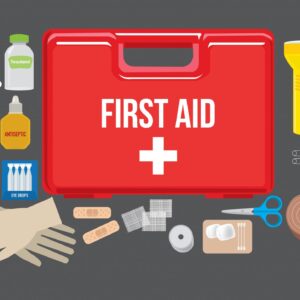In any industrial, construction, or high-risk environment, protecting workers and the public from hazards is a top priority. One of the most practical and immediate safety measures is the use of barricades. When used correctly, barricades are vital for controlling access, guiding movement, and preventing accidents in hazardous areas.
This article explores the effective use of barricades, types available, and best practices for maximizing safety and regulatory compliance.
What Are Barricades?
Barricades are physical barriers used to block or redirect access to dangerous or restricted areas. They serve as a first line of defense by warning individuals of potential hazards and preventing unauthorized entry. Barricades are commonly used in construction zones, maintenance sites, roadwork areas, industrial facilities, and emergency scenes.
Why Are Barricades Important?
Barricades play a crucial role in workplace safety by:
-
Preventing unauthorized access to hazardous zones
-
Reducing the risk of accidents like falls, electrocution, or exposure to harmful substances
-
Directing pedestrian and vehicle traffic safely around work areas
-
Indicating work-in-progress zones or areas undergoing maintenance
-
Complying with OSHA and workplace safety standards
Types of Barricades
Different hazards require different types of barricades. Here are the most common categories:
1. Warning Barricades (Caution Tape)
-
Used to alert people of potential hazards
-
Typically marked with “Caution” or “Warning” messages
-
Meant for low-level risks where access restriction is advisory
2. Safety Barricades (Hard Barricades)
-
Includes cones, barriers, railings, and plastic or metal fencing
-
Designed for higher-risk areas that require physical restriction
-
Often used around open pits, electrical work zones, or construction sites
3. Traffic Barricades
-
Used to control vehicle flow in roadwork or parking lot situations
-
Includes A-frame barriers, jersey barriers, and traffic drums
4. Red Danger Barricades
-
Indicates an immediate or life-threatening hazard
-
Access is strictly prohibited except for authorized personnel
-
Typically used in confined space entry, electrical lockouts, or high-voltage zones
Best Practices for Using Barricades Effectively
To ensure barricades serve their purpose, follow these essential practices:
1. Assess the Hazard First
-
Identify the type and level of risk involved
-
Choose a barricade that matches the severity of the hazard
2. Use Clear Signage
-
Attach warning signs with concise messages like “Do Not Enter,” “Danger – High Voltage,” or “Authorized Personnel Only”
-
Ensure signs are visible from a safe distance
3. Secure Placement
-
Ensure barricades are stable, won’t tip over, and can withstand environmental conditions like wind or rain
-
Avoid blocking emergency exits or creating additional hazards
4. Maintain Visibility
-
Use high-visibility colors (yellow, red, orange)
-
Add reflectors or lights for night-time visibility or low-light environments
5. Train Employees
-
Educate staff on what different types of barricades mean
-
Emphasize the importance of respecting barricade zones
6. Inspect and Maintain
-
Regularly check barricades for damage or wear
-
Replace faded tape, cracked cones, or broken signs immediately
Compliance and Regulations
The Occupational Safety and Health Administration (OSHA) provides guidelines for barricade use in various industries. Ensuring proper use and documentation of barricades can protect your company from fines and legal issues, and more importantly, protect lives.
Key OSHA standards to be aware of include:
-
29 CFR 1926.200 – Signage and barricade requirements for construction
-
29 CFR 1910 – General industry safety standards involving hazard communication and protection
Final Thoughts
Barricades are simple yet powerful tools for hazard prevention. When chosen and used properly, they help create safer work environments and significantly reduce the risk of accidents. Whether you’re managing a construction site, a manufacturing plant, or a warehouse, incorporating proper barricade use into your safety protocols is essential.














